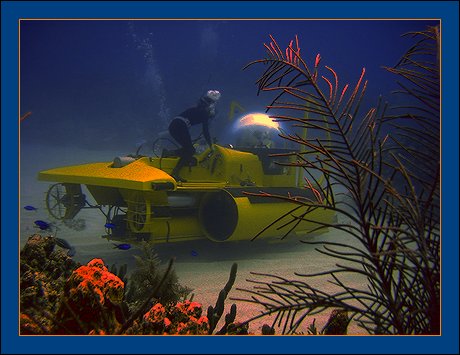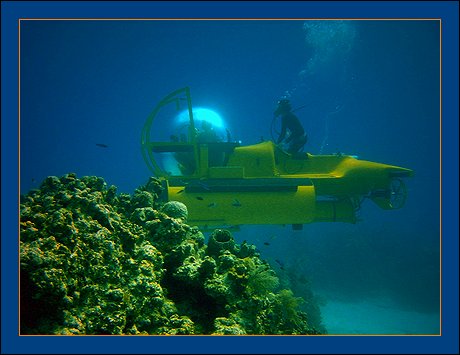The shallow, warm, crystal clear waters surrounding the
Coral reef structures are actually built from the skeletons of tiny creatures living in colonies. A closer look at the colorful colonies will reveal thousands of tiny bumps, called polyps. Each of these polyps is an individual coral animal, all of them join together to form a coral colony. Most coral colonies start life as a single polyp, no bigger than a pinhead that drifts with the ocean currents to settle on a suitable surface, such as a bare rock bottom. Once settled, the newly established coral polyp begins to grow, laying down a skeleton by extracting calcium carbonate from the surrounding water and budding off a new, individual polyp identical to itself. Continued budding is the mechanism for increasing the size of the colony but not, in general, producing new colonies. As this process repeats itself, time and time again, over many thousands of years, so the tremendous reef formations that can be found in Cayman, have been formed.
The mucus, or 'skin', that forms a layer over corals can be damaged simply by the touch of a hand or contact with a snorkeller's fin.
Corals feed at night by stretching out their tentacles to capture tiny animals suspended in the water column. Coral tentacles contain specialized cells called nematocysts, which act like poison darts to paralyze the prey which is then passed to the coral's central mouth. During the day, they withdraw their tentacles into a cup-like skeleton and are fed by algae (single cell plants) residing within their tissue. The algae use sunlight along with the coral waste products to make food for themselves and the corals. The corals, in turn, give the algae nutrients they need to survive and provide a home. This type of mutually beneficial relationship is called symbiosis. This relationship is especially important for coral growth around the


